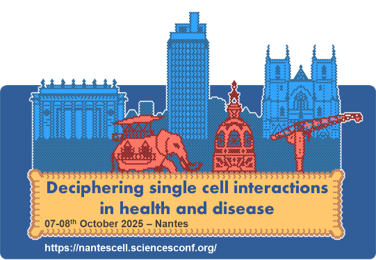|
|
|
Speakers
Invited speakers:
Presentation title: From single cells to patient stratification: mass spectrometry-based omics approaches
From 2015 to February 2022, she led the state-of-the-art Mass Spectrometry Imaging (MSI) CORE facility at the M4i institute (Maastricht University).
Since March 2022, Dr. Cillero-Pastor has been Principal Investigator at the MERLN Institute for Technology-Inspired Regenerative Medicine, where she develops advanced molecular tools to study drug mechanisms, tissue remodeling, and molecular classifiers for patient phenotyping, with a particular focus on ageing and age-related diseases.
She is the coordinator of multiple multidisciplinary projects all of which aim to bridge fundamental science with clinical and industrial innovation in the fields of regenerative medicine and molecular imaging.
Dr. Cillero-Pastor also actively contributes to the scientific community as a board member of the Dutch Society of Mass Spectrometry (NVMS) and Female Empowerment Maastricht (FEM). She is a committed advocate diversity and is deeply involved in mentoring early-career researchers and promoting interdisciplinary science through international networks and consortia.
Presentation title: Fibroblast identity, function and paracrine communication in vascular pathology
Prof. Dr. Judith Sluimer (Rotterdam, The Netherlands) earned her PhD from Maastricht University in 2008, investigating hypoxia in atherosclerosis under Prof. Mat Daemen's guidance. She then joined Prof. Ira Tabas's lab at Columbia University as a post-doc, delving into macrophage apoptosis and autophagy, funded by organizations like the Netherlands Scientific Organisation (NWO) and the International Atherosclerosis Society (IAS).
She established her independent research line in 2010, securing the NWO Veni grant and a tenure track at Maastricht UMC+. Judith and her team aim to reverse vascular aging and atherosclerotic plaque destabilization by understanding inflammatory and fibrotic cellular mechanisms. She combines experimental in vivo and in vitro models with single cell sequencing, studies involving human tissue samples, and non-invasive imaging. Her group's diverse collaborations have yielded significant insights into vascular cell heterogeneity and intercellular communication, supported by grants and fellowships from organizations like a Dutch Heart foundation personal fellowship, NWO VIDI, Marie Curie and a Humboldt fellowship. She actively engages in global research collaborations, contributing to projects like the Leducq grant scheme and affiliations with University of Edinburgh and RWTH Aachen.
In addition to research, teaching and mentoring, Judith has organized major scientific events and holds key roles in academic societies, previously serving as treasurer for the European Vascular Biology Organization, and contributing to ESC’s basic research council, and editorial boards of Cardiovascular Research and Vascular Pharmacology.

Title of the talk: From single-cell to spatial transcriptomics
Biosketch: I obtained my PhD in 2009 from the University of Paris XI (France) working on transcription regulation in the yeast Saccharomyces cerevisiae in the team of Michel Werner at the CEA-Saclay. I then did a postdoc (and was later staff scientist) at the EMBL in Heidelberg (Germany), working on enhancer-promoter communication in Drosophila melanogaster in the team of Eileen Furlong. I returned to France in 2017 after obtaining a permanent CNRS position, and started my own team at the Fonctional Genomics Institute of Lyon (IGFL) at the ENS of Lyon (France). I obtained prestigious grants such as the ERC Starting grant. Since 2021, I co-lead the Spatial-Cell-ID spatial transcriptomic facility at the ENS of Lyon, which was funded thanks to a large grant from the French "investissement d'avenir" programme. I was promoted to Research Director at the CNRS in 2025.
The primary scientific interest of my team is to understand how gene expression is regulated during development. We particularly focus on the role of 3D genomic organization in this regulation. We combine this scientific goal with the development of experimental and bioinformatics spatial OMICs tools (within the frame of the Spatial-Cell-ID facility) applied to our scientific questions.
Her research interests now lie in the domain of mathematical modeling in the biomedical context. Her current position as a post-doc with ENS de Lyon in collaboration with Bertrand Michel and Franck Picard focuses on kernel-based machine learning for single cell data.
Local speakers:
Presentation title: Intracranial Aneurysms: Insights from Single-Cell Profiling of Cerebral Arteries
During her initial studies in biological engineering, Anne-Clemence developed a curiosity for fundamental research and decided to pursue her training with a doctoral thesis. She therefore turned to vascular biology, a discipline at the interface between pure biology and fluid mechanics.
Since her recruitment as a researcher and the establishment of her own research group, she has followed two mutually complementary lines of research: i) studying the effect of mechanical forces on vascular cells and its possible contribution to intracranial aneurysm formation, ii) understanding the pathophysiological effect of rare variants associated with intracranial aneurysms (with Dr Loirand).


